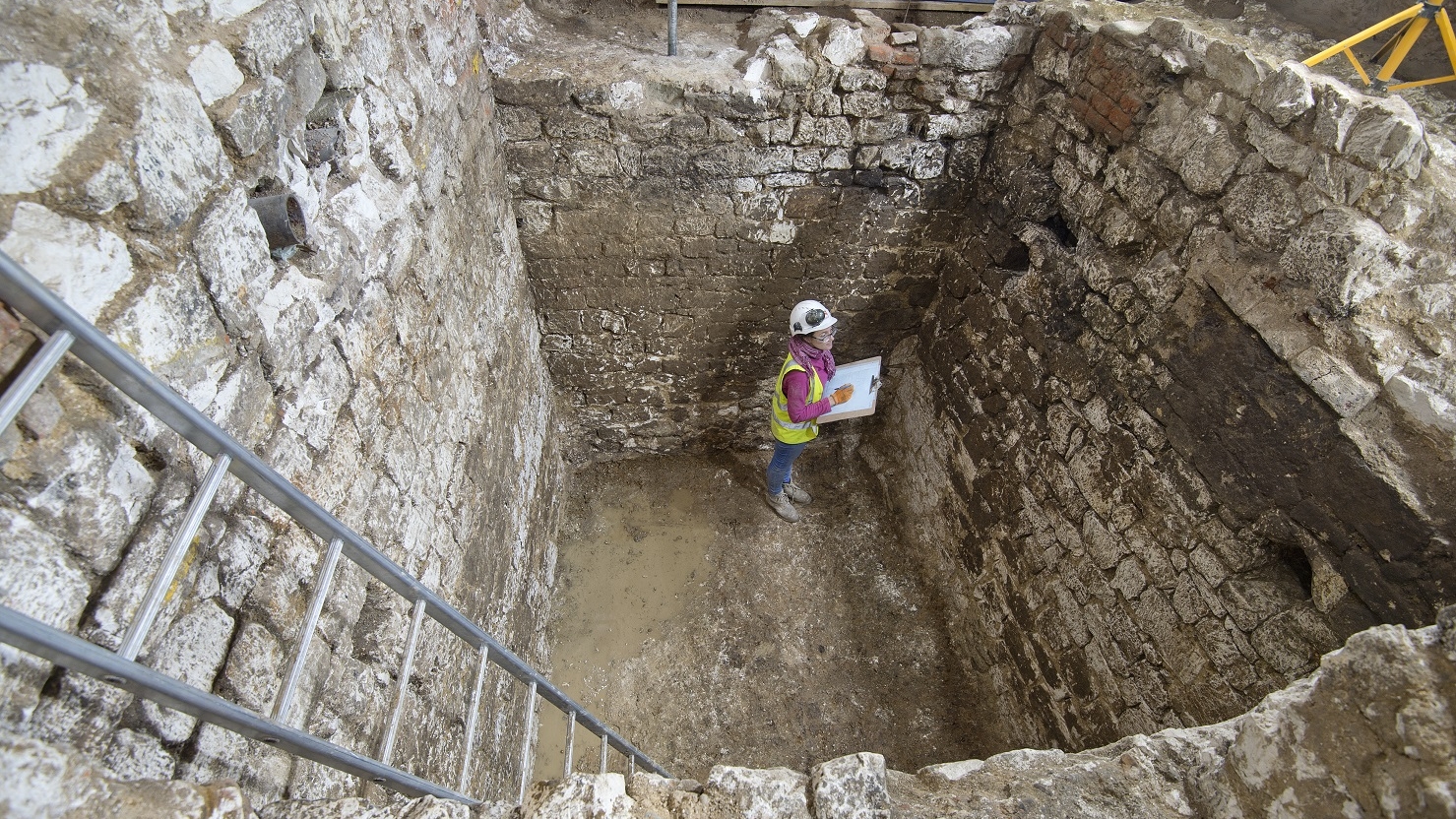
News Archive 2020
Fascinating archaeological finds discovered beneath The Courtauld
The remains of an enormous medieval cesspit filled with fascinating finds from over the centuries has been discovered below The Courtauld Gallery.
The extraordinary discovery, revealed in The Observer on Sunday, was made by archaeologists during the ongoing transformation project that will preserve our magnificent Grade 1 listed, 18th century building, and make our world-class artworks, research and teaching facilities more accessible to wider audiences and students around the world. The first phase of this project will make it possible to display a greater variety of works from The Courtauld collection and new dynamic spaces for our temporary exhibitions will allow us to expand our exhibition programme. A redesigned visitor reception will improve access, whilst a new Learning Centre will provide improved facilities for schools, families, young people, community groups and adult learners.
This ambitious project has been made possible thanks to the generous support of the National Lottery through £9.4m from The National Lottery Heritage Fund and donations from generous philanthropic foundations and individual supporters.
The chalk-lined cesspit, which measures almost 15 feet deep, was uncovered by archaeologists and is believed to be part of the Chester Inn, a poorly-documented 15th century residence which once stood where Somerset House does today. Experts believe that the cesspit might have been used by both visitors and residents of the Chester Inn as they passed through its courtyard.
After a month of careful excavation by archaeologists from MoLA (Museum of London Archaeology), the cesspit was found to contain some fascinating objects including a rare 14th century ‘Penn’ floor tile – a decorating material of choice for palaces and monastic sites – tableware dating from the 14th and 15th centuries and an assortment of pottery drinking vessels. Metalwork items including a bone-handled fork, pendant, delicate finger ring and iron spur were also discovered.
MOLA Senior Archaeologist, Antonietta Lerz, said: “It’s an amazing coincidence that on excavating the exact spot of the new Courtauld Gallery toilets, we found not just one, but two ‘toilet precursors’ which document the less glamorous side of almost five hundred years of luxury life alongside the Thames. It’s also remarkable that the structure remained in use for over 400 years, as the original medieval cesspit was converted into a cellar by the 17th century and a series of successive brick floors were then laid down, the latest dating to the 18th century when a small latrine was inserted in the corner. This is certainly not your typical find and represents a fascinating glimpse into the many levels and layers of history beneath the current building.”
Professor Deborah Swallow, Märit Rausing Director of The Courtauld, added: “The Courtauld is currently undergoing the most ambitious programme of development in our history, and we were fascinated to find that the building work had led to the discovery of these extraordinary objects in the foundations of our gallery. We are delighted that these discoveries will shed more light on the fascinating history of this building. The first phase of the refurbishment of The Courtauld will continue throughout this year and I look forward to welcoming back our visitors and students to The Courtauld Gallery at Somerset House in Spring 2021 where they can enjoy these remarkable artefacts and the history they reveal for themselves.”
These fascinating finds are being studied and conserved by MOLA and it is hoped that a selection of the artefacts will be displayed in the Gallery when it reopens.
Get up close with this 3D model
3D model instructions
With a mouse and keyboard: Click on the model and drag your mouse to spin it up and down or left to right, or use your mouse wheel. To zoom in, click once and move your mouse to move the view. To zoom out again, drag your mouse off the object. To find out more about the cesspit, click on the numbers.
On a touchscreen: Drag your finger up and down or left and right on the model to spin it. To zoom in, touch the arrow button in the top left corner to enter full screen mode, then tap twice on the object very quickly. Drag your finger to move the view. To zoom out again, touch above or below the object.

















